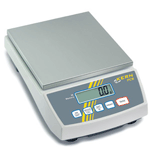How the Pharmaceutical Industry Uses Precision Scales

The primary measure of the effectiveness of a pharmaceutical product is how beneficial it is for the patient, while introducing minimal side effects. A vital part of the pharmaceutical manufacturing process occurs at the quality control stage. A variation of a few milligrams in a powerful drug can mean the difference between a nightmare of side effects, a harmless and ineffective placebo, or a valuable treatment method. The key to ensuring that a “wonder drug” achieves the goals that the developers set out for it is careful measurement via a laboratory scale.
Types of Laboratory Scales
Just as various types of microscopes offer the ability for researchers to see items ranging from bacteria down to molecules, different types of laboratory scales offer the ability to measure items to within very small masses. These scales carry specific names to differentiate their levels of readability:
- Precision balances vary in resolution and some have readouts as low as a milligram (1 mg = 0.001 g).
- Analytical balances display weights to within one-tenth of a milligram (0.1 mg = 0.0001 g).
- Semi-microbalances provide readings to within one-hundredth of a milligram (0.01 mg = 0.00001 g).
- Microbalances offer measurements to within a microgram (1µg = 0.000001 g).
- Ultramicrobalances give readouts to within one-tenth of a microgram (0.1µg = 0.0000001 g).
Laboratory Scales and Pharmaceutical Research
One of the misconceptions surrounding the use of laboratory scales is that the number of digits a unit is capable of displaying is equivalent to its accuracy and precision. For a field that requires such precise measurements as pharmaceuticals, this mistake can be costly. A scale can display results down to the microgram, but can still deliver inaccurate and imprecise measurements.
The precision of a scale refers to how well it can replicate results. In pharmaceutical research, technicians must frequently test several product batches per day. The reliability of these scales is essential to establishing the consistency of results.
The accuracy of a scale refers to how close a scale gets to delivering the proper results with little to no discrepancies. When a scale delivers inaccurate measurements, the entire manufacturing process can be affected.
Another factor in how pharmaceutical laboratories employ precision scales comes from the establishment of baseline settings. Laboratory scales are not “plug-and-play” instruments; they require careful calibration before they can be used on an everyday basis. These delicate machines must be adjusted for temperature, altitude and other environmental conditions to ensure that they deliver the best readouts.
Features of Laboratory Scales
Modern laboratory scales are designed to be easily calibrated automatically or through manual processes. Properly calibrated, these balances deliver accurate results, while their durable construction helps them last for years. Users can also connect the scale to a computer or printer through the unit’s RS232 port to export data.
For more information on how to purchase a laboratory scale that meets your needs, contact the experts at Tovatech.
